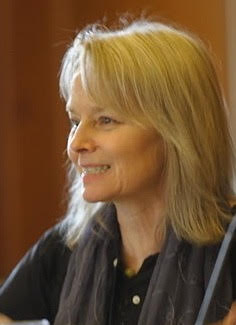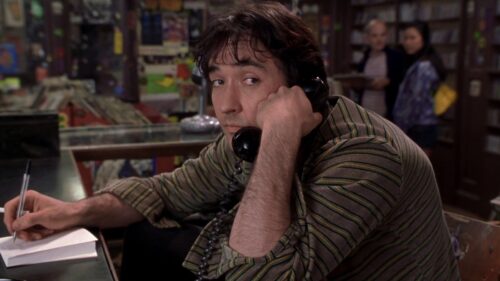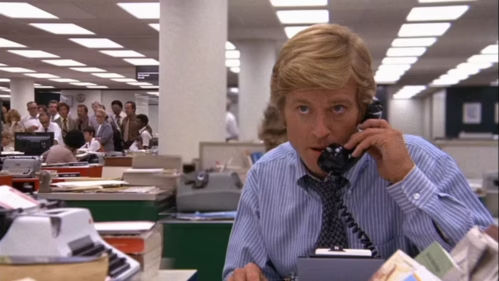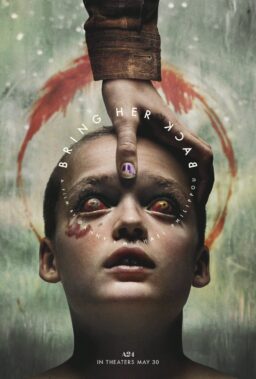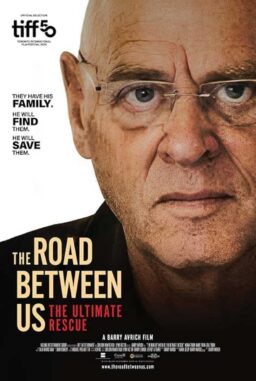Jessica Lange was waitressing in
New York when asked whether she’d like to audition for a role in “King
Kong.” “What the…?,” she thought, and so flew out to Los
Angeles, a place she’d never been. Producer Dino De Laurentis took one look at
her ’70s blonde ‘fro and decided they shouldn’t even test her, but an Assistant
Director, noting she’d come such a distance, managed to put her before a
camera. As she did her scene, the A.D., then others—and finally the legendary
Italian—came in to watch. Over many actresses, Lange got her first film, a
featured part as “Dwan,” cast opposite Jeff Bridges and Charles
Grodin in John Guillermin’s remake of the 1933 classic.

“King Kong” sold
tickets (it was the 7th highest grossing film of 1977), but it—and her performance—were
panned by numerous critics. What would have been a career killer for many was
not for Lange, whose powerful new fan, New Yorker critic Pauline Kael, wrote,
“The movie is sparked by Jessica Lange’s fast yet dreamy comic style. She
has the wide, high forehead and clear-eyed transparency of Carole Lombard in
“My Man Godfrey,” and one liners so dumb that the audience laughs and
moans at the same time; yet they’re in character, and when Lange says them she
holds the eye and you like her, the way people liked Lombard.”
Thirty-eight years later, Lange
told this discovery story before an ardent crowd gathered at Santa Barbara’s
Bacara Resort. There to receive the Kirk Douglas Award for excellence in film,
for which she was selected by the inimitable actor, she would be the first
woman so honored. The award is bestowed annually at a black tie dinner
benefiting the Santa Barbara International Film Festival, but, for the first
time, Douglas, who turns 98 in December, was unable to attend the ceremony in
person. A marvel of a man who this fall published another book (“Life
Could Be a Verse – Reflections on Love, Loss and What Really Matters”),
his moving, enthusiastic virtual appearance was received with a special warmth.
The night was studded with clips
from many of the roles Jessica Lange created after “Kong.” And it was
a feast, as 41 characters have lived through her in films, television and the
theater. Included were “the Angel of Death” in “All That
Jazz” (1979), her second film role (which director and sometime partner
Bob Fosse wrote for her), followed by Bob Rafelson’s 1981 remake of the 1946
film noir, “The Postman Always Rings Twice.”

When the clip of Jack Nicholson’s
“seduction” of Lange in the diner ran, a murmur spread through the
dining room. The acting is excellent and very powerful, yes—but the term
seduction isn’t really accurate; this is a rape scene, and it’s quite shocking.
It was not something I remembered from my first viewing of the film: then I’d
liked it a lot, but a rape? This left
me wondering, in our era—with the topic raging and attitudes rightly changing—whether
this film could even be (re)made again.
Between clips, Lange’s invited
guests came to the podium. First was the fine actress Kathy Bates, herself a
Best Actress Oscar winner for Rob Reiner’s darkly humorous “Misery” (1990), now
Lange’s co-star on “American Horror Story,” in its 4th season on FX. Sparkling
in her black tux, she spoke directly to Lange, seated out in the audience,
confessing that when they first met, the admiration she’d long had for Lange’s
talent (“much like Bette Davis”) brought on such feelings of intimidation she
feared she wouldn’t measure up. But as her fright dropped away, acting together
caused a real friendship to grow. Bates summed up beautifully: “Working with
you, babe, is like riffing jazz with the lights down low and nobody else
around.”

A clip of “Frances”
showcased her next role which, in a sense, chose Lange. Graeme Clifford, the
editor on “Postman,” realized as he worked that he was looking at the
lead for his first directing effort. The project would be based on the life of
actress Frances Farmer, best known in the ’40s, who’d had both success and
major struggles in Hollywood, as well as a dysfunctional family history, leading
to a disillusion culminating in tragedy. “Frances” offered a deep, tough part
to Lange, who prepared harder than she ever had, delving into her own difficult
family background to reach the emotional levels she wished to portray.
When principal photography ended,
she was wiped out, yet wanted to quickly work again. Deciding to go for
“something light,” she accepted a supporting role alongside Dustin
Hoffman in Sydney Pollack’s “Tootsie” (1982). Who can possibly forget
that sweet, smart, fall-over-laughing film of a desperate actor cross-dressing
in order to actually act? And who can forget Lange as Julie, the actress whom
Hoffman-as-woman must act opposite, as he-the-man falls blitheringly in love
with her? Owen Roizman’s camera swoons over Lange, especially up close,
capturing that fragile, open, part-Scandinavian beauty, the kind that breaks
hearts.
As 1982 reached its end, Jessica
Lange would become the first performer in 40 years to be nominated for two
Academy Awards in the same year: as Best Actress for “Frances,” and
as Best Supporting Actress for “Tootsie.” She won the Oscar for
“Tootsie,” along with awards from the National Society of Film
Critics, the New York Film Critics Circle, a Golden Globe, and others. More starring
roles and more awards ensued, and then came “Sweet Dreams” (1985),
Karel Reisz’ biopic of country singer Patsy Cline. That was a role Meryl Streep
admitted she “begged” for—but Reisz had always wanted Lange. She got it,
playing opposite Ed Harris as her husband, and got another Best Actress
nomination, too.
Allow me to add here that Jessica
Lange has long been among my favorite actresses. Of the same generation, and
growing up female amidst a sea change in our expected roles, she has often
played characters I can see myself in, embodying that seesaw world of newfound
independence, then its uncertainty, with which I identify too. When SBIFF
Director Roger Durling announced her name and this event, I had to be there and
had to write about her. But never, as a non-actor, did I suppose I could truly
discuss her acting. For that I turned to an actor/director friend.

Darrell Larson first worked with
Lange on “Frances,” discovering very quickly that “she would do anything to get
the scene right. She’ll draw on anything, use anything she finds, if she thinks
it will be useful. She has amazing concentration. She asked Kim Stanley, who’d
retired, to play her mother in “Frances,” and those two together did some of
the finest acting I’ve ever witnessed…Her work makes me think of Katherine
Hepburn, although Hepburn’s power was based in her intellect, where Jessica’s
is in the body…It’s sexual. She’s the Goddess Aphrodite. She’s always at the
center of things. (It’s) unmistakable female power. She’s always had it, and
couldn’t lose it if she wanted to.”
Throughout the ’80s, other films
beckoned, some of them (“Crimes of the Heart” (1986),
“Everybody's All-American” (1988)) lower profile, while one,
Costa-Gavras’ “Music Box,” (1989), with a script by Joe Ezsterhas,found her playing an American
lawyer defending her Hungarian émigré father (Armin Mueller-Stahl) when he’s
charged with war crimes. Initially she can’t believe it but, as the trial
proceeds, details – and her father’s behavior—begin to gnaw. While the film
achieved scant box office success, the interplay between Lange and
Mueller-Stahl was tremendous, with her performance garnering a fifth Academy
Award nomination.
The ‘90s meant more work, notably
in “Blue Skies” (1994), playing a ‘60s housewife, manic-depressive and stuck on
a military base as her conservative officer husband, Tommy Lee Jones, very much
a ‘60s man, concentrates on work. The last film of veteran British director
Tony Richardson, it got caught up in the Orion Pictures’ bankruptcy and sadly
shelved for 3 years, only getting a release—and critical praise—after
Richardson’s death. Once again Lange was mesmerizing, and another Best Actress
Oscar was her reward. There’s also “Rob Roy” (1995), Michael Caton-Jones’ 18th
century swashbuckler set in the Scottish Highlands. The film looks gorgeous,
with the surprise of a remarkably adult marriage (quite satisfying in its
grown-up sexiness) portrayed by Liam Neeson and Lange, and a standout
supporting cast including John Hurt, Brian Cox, and Tim Roth, whose fabulous
performance as an aristocratic psychopath earned him a nomination for Best
Supporting Actor. (He deserved to win, too.)
In this period Lange took on
theater as well, making her Broadway debut as Blanche in “A Streetcar Named
Desire” (1992), next doing “Long Day’s Journey into Night” (2000) at London’s
West End, and “The Glass Menagerie” (2005) in its Broadway revival. With HBO’s
“Grey Gardens” (2009), she turned in an astonishing performance as Big Edie,
the unsteady and reclusive aunt of Jackie Kennedy. Nearly unrecognizable in the
part, its excellence garnered her first Primetime Emmy.

Television producer Ryan Murphy
is an emerging mogul whose multiple hit shows include “Nip/Tuck,” “Glee,” the
HBO film “The Normal Heart,” and “American Horror Story.” Standing before the Santa Barbara Film
Festival audience, resplendent in a burgundy velvet tuxedo, matching shoes and
bow tie, he charmed everyone by noting he’d admired Jessica Lange the actress
for a very long time. “What I love the most: she suffers no fools, she expects
the best; she is a sassy and sexy lady. She is a great actress. Allure is
a word I use to describe her, and even the gays are not immune.”
As the laughter subsided, he
explained how, after seeing her Blanche twice in that 1992 Broadway production,
he longed to work with her. The opportunity finally came in 2011 with “American
Horror Story”—a phantasmagoric anthology series which switches out storylines
every season. Hoping to expose her work to a new generation, he and co-creator
Brad Falchuk offered Lange a supporting role within the excellent repertory
cast. She had to be persuaded, then was so good that expanding her role the
following year wasn’t even debatable. Her character quickly grew into the lead,
drawing in further acclaim for the series and bringing her a second Primetime
Emmy, a fifth Golden Globe, and her first Screen Actors’ Guild Award.
In introducing her, Murphy nearly
sang it out: “We have worked together for 5 years. I was such a fan, and I
wanted to work with her, and one of the great joys of my career is that young
people LOVE that show. I am so glad that so many KNOW my Jessica Lange, OUR
Jessica Lange.”
Jessica Lange accepted her award
in a slightly more subdued manner, kissing Murphy, thanking everyone. Her
speech – “a jumble of papers,” she called it – had impact, as she recognized
her good fortune in finding acting, to have worked with such talented people,
“that this is what my life became.” Commenting on the night’s abundant clips,
she explained that many were from films she’d done back-to-back, sometimes
shooting 2, even 3 in a year. But, “when I hit 50, the roles were slow in
coming. It seems as though youth is directly attached to your
talent…especially for women. It’s not true for actors. They keep working, whatever
their age. But I don’t think it will ever change for women… And then you
evolve into the ‘parental’ roles…”
Things changed for her again with
“American Horror Story” and its success on television, where “really
interesting roles for women are now happening…(Television) is actually
cinematic. Maybe more cinematic than most films today.”
Then this fine and memorable
actress, whom some of us have watched and appreciated all those thirty eight
years, drew the evening to its close, saying, “I am so blessed to live and work
in this immensely diverse, creative world. I feel a great love and
connection to this business and to this art. I am thrilled and honored that
Kirk Douglas would single me out for this award, and I thank you all for being
here.”
Which brings us back to “American
Horror Story.” What an actors’ romp this series surely is, while also being
fabulously production-designed, costumed, shot, and edited. “Cinematic,” as
Lange had said. What fun it must be to work on it. Surely there’s no better
ending here than in this great night’s final clip: Jessica Lange as German
expatriate Elsa Mars, the “Freak Show” carnival’s grande dame. The song is
David Bowie’s “Life on Mars.”
